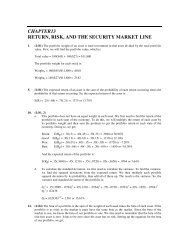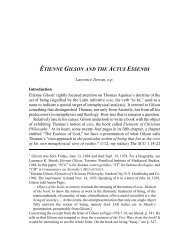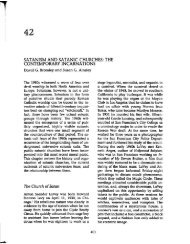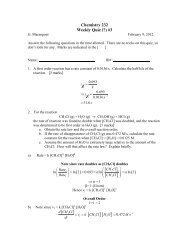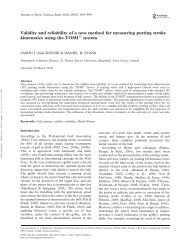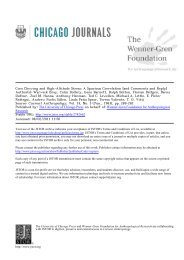Health and the Social Construction of Masculinity in Men's Health ...
Health and the Social Construction of Masculinity in Men's Health ...
Health and the Social Construction of Masculinity in Men's Health ...
Create successful ePaper yourself
Turn your PDF publications into a flip-book with our unique Google optimized e-Paper software.
Stibbe / MASCULINITY IN MEN’S HEALTH MAGAZINE 33<br />
challeng<strong>in</strong>g this position, mascul<strong>in</strong>ity is <strong>of</strong>ten taken to <strong>the</strong> opposite extreme<br />
<strong>and</strong> treated as a wholly socially constructed phenomenon. Consider <strong>the</strong> follow<strong>in</strong>g<br />
example: “<strong>Mascul<strong>in</strong>ity</strong> is ...aconcept that bears only an adventitious<br />
relation to biological sex <strong>and</strong> whose various manifestations collectively constitute<br />
<strong>the</strong> cultural, social, <strong>and</strong> psychosexual expression <strong>of</strong> gender” (Solomon-Godeau<br />
1995, 71). But, as Brittan (1989, 14) po<strong>in</strong>ts out, “men <strong>and</strong><br />
women ...donotexist outside <strong>the</strong>ir bodies,” <strong>and</strong> this approach misses <strong>the</strong><br />
role that bodies play with<strong>in</strong> human <strong>in</strong>teraction <strong>and</strong> society. In Connell’s<br />
(1995) approach, “bodies are seen as shar<strong>in</strong>g <strong>in</strong> social agency, <strong>in</strong> generat<strong>in</strong>g<br />
<strong>and</strong> shap<strong>in</strong>g courses <strong>of</strong> social conduct” (Connell 1995, 54).<br />
The biological may not determ<strong>in</strong>e <strong>the</strong> social, but that does not stop men<br />
from “artificially attach<strong>in</strong>g all manner <strong>of</strong> power <strong>and</strong> privilege to biological<br />
differences” (Kle<strong>in</strong> 1993, 5) to ga<strong>in</strong> power over women. For example, men’s<br />
“greater sport<strong>in</strong>g prowess,” which is related to biological factors, is given<br />
social significance <strong>and</strong> becomes “symbolic pro<strong>of</strong> <strong>of</strong> men’s superiority”<br />
(Connell 1995, 54).<br />
However multiple <strong>and</strong> contested <strong>the</strong> concept may be, <strong>the</strong>re is one form <strong>of</strong><br />
mascul<strong>in</strong>ity that appears repeatedly <strong>in</strong> <strong>the</strong> literature, albeit with different<br />
names <strong>and</strong> slightly different def<strong>in</strong>itions. The names <strong>in</strong>clude “hegemonic”<br />
mascul<strong>in</strong>ity (Connell 1995), “traditional” mascul<strong>in</strong>ity (Helgeson 1995),<br />
“dom<strong>in</strong>ant” mascul<strong>in</strong>ity (Courtenay 2000b), <strong>and</strong> “negative or extreme” mascul<strong>in</strong>ity<br />
(Helgeson 1995). While styles <strong>of</strong> mascul<strong>in</strong>ity change, <strong>the</strong> “justification<br />
<strong>and</strong> naturalization <strong>of</strong> male power” (Brittan 1989, 2) does not. Hegemonic<br />
mascul<strong>in</strong>ity, as an “expression <strong>of</strong> <strong>the</strong> privilege men collectively have<br />
over women” (Connell 1996, 209), is <strong>the</strong>refore <strong>the</strong> least likely to change, particularly<br />
<strong>in</strong> those aspects that exploit biological factors. It is this form <strong>of</strong> mascul<strong>in</strong>ity<br />
that leads to <strong>the</strong> negative health behaviors described by Courtenay<br />
(2000a) <strong>and</strong> is most <strong>in</strong> need <strong>of</strong> challeng<strong>in</strong>g by publications related to men’s<br />
health.<br />
HEGEMONIC MASCULINITY AND DISCOURSE<br />
Hegemony is power that “makes people act as if it were natural, normal, or<br />
simply a consensus” (van Dijk 1997, 19). In <strong>the</strong> case <strong>of</strong> mascul<strong>in</strong>ity, “traditional<br />
characteristics <strong>of</strong> mascul<strong>in</strong>ity are made to seem so correct <strong>and</strong> natural<br />
that men f<strong>in</strong>d . . . dom<strong>in</strong>ation . . . not just expected, but actually dem<strong>and</strong>ed”<br />
(Craig 1992, 3).<br />
Hegemonic mascul<strong>in</strong>ity is reproduced through discourses that make it<br />
seem natural, <strong>in</strong>evitable, <strong>and</strong> morally right that men behave <strong>in</strong> particular<br />
ways. Bhabha (1995, 57) was asked “Are you a man or a mouse?” by his<br />
fa<strong>the</strong>r, a question that presupposes bravery to be a natural feature <strong>of</strong> mascul<strong>in</strong>ity.<br />
But hegemonic discourses both can be <strong>and</strong> are challenged through<br />
counter discourses, such as <strong>the</strong> discourse <strong>of</strong> fem<strong>in</strong>ism.



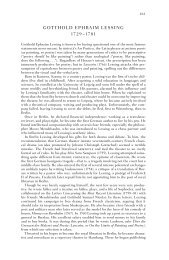

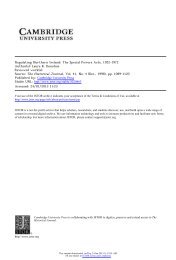

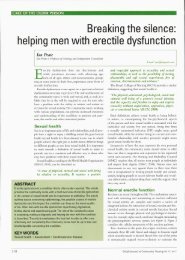
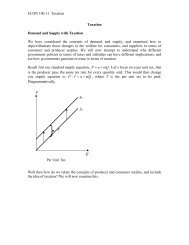
![The Rink - Cyril Dabydeen[1].pdf](https://img.yumpu.com/21946808/1/155x260/the-rink-cyril-dabydeen1pdf.jpg?quality=85)

